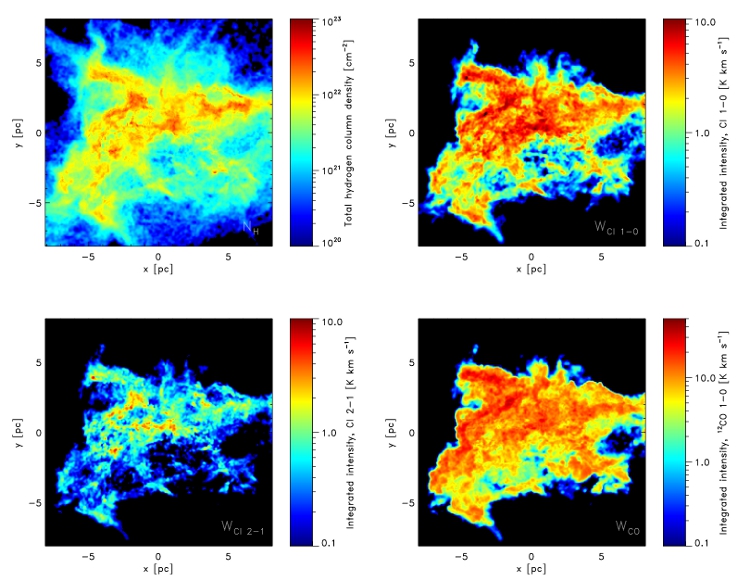| EPoS Contribution |
|
The carbon chemistry of GMCs and their surroundings
Paul Clark ZAH - ITA, Heidelberg, DE | |
| We present an overview of how the carbon chemistry and thermodynamics of star-forming clouds varies with the environmental conditions at the cloud's location. We begin by showing how the "X-factor" of CO varies with strength of the ambient interstellar radiation field (ISRF) and the cosmic ray ionisation rate, both of which can be taken as a parameterisation of the star formation rate (SFR). Our results suggest that the X-factor should rise with increasing SFR, and we discuss the consequences for interpretations of the Kennicutt-Schmidt relation. We also look at the ability of CII line emission to trace the formation of GMCs from large-scale flows. Our recent numerical simulations predict that for clouds forming in a standard ISRF environment, the emission in the CII line is dominated by cold (< 100 K) C+, and is generally fairly weak, with integrated intensities of only a few K km/s. Nevertheless, we find that emission from C+ can provide a means by which to probe the large-scale atomic or "dark" H2 flows out of which the GMCs form. Finally, we find that CI emission is a good tracer of the H2 column density throughout the cloud, and we explore this trend at lower metallicities, such as though found in the LMC/SMC. | |
 | |
| Caption: Images from a time-dependent chemistry simulation of a molecular, star-forming cloud with 10,000 Msun of gas, bathed in a standard UV field. The Top left: Map of the total column density of hydrogen nuclei, NH. The area shown is approximately 16 pc by 16 pc and contains most of the mass of the cloud. Top right: Map of velocity-integrated intensity in the [CI] 1-0 transition, computed using RADMC-3D with the large velocity gradient approximation. Bottom left: The same as in the top right panel, but for the [CI] 2-1 transition. Bottom right: The same as in the top right panel, but for the J = 1-0 transition of 12CO. | |
| Collaborators: S.C.O. Glover,ITA/ZAH, Germany M. Micic, Belgrade, Serbia F. Molina, Santiago, Chile |
Key publication
Suggested Sessions: Chemistry |

